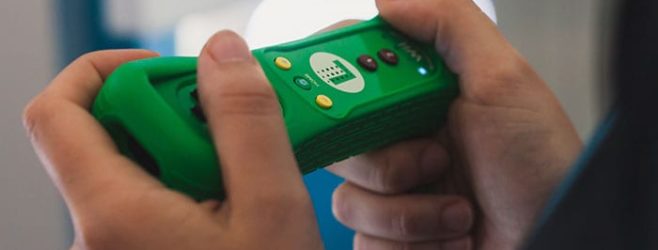Mom and dad always warned us that video games would turn our brains into mush, but for children suffering from cerebral palsy, hope may actually come in the form of a Nintendo product.
Researchers from Baskent University in Turkey have shown that the Nintendo Wii gaming system can be used to help improve hand function in children with cerebral palsy, particularly when combined with standard neurodevelopmental treatment.
What Is The Wii and How Could It Potentially Help Those with Physical Ailments?
The Nintendo Wii, which has been around since 2006, is a motion-detection video gaming system that incorporates physical activity into gameplay. Players swing a remote-like device that interacts with on-screen activities to deliver a more immersive, more physical gaming experience.
The university study, which was published this month in The Journal of Physical Therapy Science, reveals how the Wii could be used to help motivate patients in rehabilitation and physical therapy programs.
Researchers separated 30 children with cerebral palsy into 2 groups. The first group received a standard regimen of neurodevelopmental treatment, while the second one received the same treatment but also played 3 games of virtual tennis, baseball, and boxing on the Wii. This program was repeated for 6 weeks. Scientists then assessed the functional independence and arm/hand mobility of each child. The group that had been playing video games for several weeks scored significantly higher in tests that measured for hand function and abilities.
“Since the Nintendo Wii increases motivation and provides an opportunity for enjoyable therapy, we think that it increases adaptation of children to rehabilitation programs and that it may be added to conventional treatment programs,” the researchers explained in the study.
Interpreting the Study’s Results
The findings open the door to a number of alternative approaches to physical therapy. Not only does the study point to a more enjoyable treatment method for children, it implies significant progress can be found in a device that is already commercially available and costs significantly less than the robotic systems used in some rehabilitation programs.
However, it should be stressed that the study did not assess the effect of playing Wii games without neurodevelopmental treatment, so any claim about the benefits of such a system must go hand-in-hand with traditional physical therapy. Nonetheless, the study’s authors believe this combined treatment could offer a safer, more enjoyable, and inspirational way to help children with compromised motor function.
Cerebral Palsy, Caused by Birth Injuries
Cerebral palsy is the most common motor disability found in children. It is caused by damage to the brain or nervous system, usually before, during, or just after pregnancy, and affects roughly 1 in 1,000 live births. The U.S. Centers for Disease Control and Prevention (CDC) estimates 1 in 323 children have been identified with cerebral palsy. Modern treatment of the disorder is a lifelong process that focuses on the management of symptoms and conditions, mainly through physical therapy and neurodevelopmental treatment.
However, some research has taken a more technological approach. Earlier this year, Boston-based PathMaker Neurosystems began clinical trials of a non-invasive medical device that electrically stimulates areas of the body affected by spasticity, one of the most common symptoms of cerebral palsy that affects some 15 million patients worldwide. PathMaker claims its device suppresses the spinal circuits responsible for causing muscles to become stiff and uncontrollable. If successful, the system will provide a potential solution to a condition that has proved insurmountable in the realms of surgery, pharmacology, and physical therapy.
For the families that have had their lives upended by such disorders, there is hope, and it comes in many shapes, sizes, and forms. Let us hope that these technologies — such as the Nintendo Wii, such as PathMaker’s new medical device — bring patients with cerebral palsy another solution to everyday motor-function struggles.



